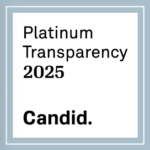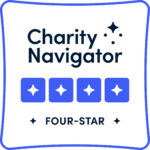On May 9th, Friends of Cancer Research (Friends), in collaboration with Parker Institute for Cancer Immunotherapy (PICI), hosted a public meeting, “Unlocking Next Generation Therapies: Exploring Innovative Development and Manufacturing Models for Cell Therapies.” This meeting came at a critical inflection point, as the scientific potential of engineered cell-based therapies continue to advance and bring hope for patients. However, regulatory frameworks, manufacturing models, and access mechanisms have not fully evolved to support timely and equitable delivery— particularly for patients with rare cancers and other complex diseases.
To address these challenges, Friends and PICI developed a set of proposals aimed at aligning regulatory flexibility, manufacturing adaptability, and sustainable development models that support broader availability of genetically modified cell-based therapies for patients.
Key Takeaways
Takeaway #1 – There is a growing need for systemic rethinking and regulatory flexibility to broaden patient access to cell-based gene therapies. The current development and manufacturing models may not be fully adequate for small or rare disease populations. Regulatory flexibilities proportionate to population size and clinical urgency are needed, especially when no alternative therapies exist. This includes balancing the need for timely access while ensuring product safety, quality, and efficacy with appropriate oversight. Risk-adjusted manufacturing strategies that maintain quality while enabling scalability are critical. Without FDA approval, reimbursement remains out of reach, leaving many promising therapies in a state of limbo.
Takeaway #2 – Enhancing access to cell-based gene therapies requires collaboration and information sharing across the research, regulatory, and manufacturing ecosystem. Establishing mechanisms for non-competitive information exchange can help avoid redundancy, reduce inefficiencies, and align sponsors with regulatory expectations. There are opportunities to leverage existing data and platform-based approaches, even in the absence of formal designations, to reduce development timelines and cost burdens. Decentralized manufacturing models, such as mobile or point-of-care manufacturing, can be explored to improve delivery efficiency and support access in geographically dispersed or low-throughput settings. This necessitates a structural oversight framework that enables consistency without imposing commercial-scale burdens, which may not always be feasible or appropriate in these settings.
Takeaway #3 – To achieve sustainable access, there is a need to explore models beyond traditional for-profit commercialization, such as public-private partnerships, cost-recovery mechanisms, and grant-funded access programs. In certain cases, alternative development pathways may be necessary to ensure therapies with compelling early evidence do not stall due to commercial limitations. Across all stages of development, expanding access will depend on partnership models that recognize the distinct incentives, risks, and capabilities of academia, industry, regulators, and non-profits alike.
Panelist Insights & Perspectives from the Meeting
Thank you to our incredible panelists. Here are some key takeaways from the panel discussions:
“I think we have to be more intentional about moving things earlier—and into a more noncompetitive space for information sharing. We often hear: ‘Can you just tell me what someone else did for this?’ And of course, that’s not something FDA can necessarily do. But in rare disease models, where it’s not sustainable to have multiple groups developing therapies for 10–15 patients nationwide, we should be thinking about platform-like approaches—sharing information across programs, including preclinical lessons learned. At FDA, we’re comfortable allowing leverage across programs when it makes sense and when the backbones are the same. There’s a lot of flexibility, but we need more information sharing in a noncompetitive space.”— Nicole Verdun, U.S. FDA
“Philanthropy can launch efforts, but it cannot sustain drug development. What’s needed are new business models—still within the private sector—that offer modest returns, just enough to keep the flywheel moving. These models require access to different sources of capital: not traditional venture funding, but mission-aligned investors like family foundations.” — Crystal Mackall, Stanford University
“There’s a clear gap between the availability of life-saving technologies and patient access—only about 25% of eligible patients are receiving CAR T-cell therapy. Where companies are unable to close that gap, hospital-based networks can play a critical role, especially in non-profitable indications like pediatric cancers or for patients with advanced disease who may not receive treatment in time. Local manufacturing—within a day—could support access for geographically or demographically disadvantaged populations. From an ethical standpoint, a safety net is needed, and the challenge lies in building the network to deliver it. While in vivo approaches are being explored, autologous therapies may still be the most practical in many cases. Cost remains a major factor, especially with direct injectable Adeno-Associated Virus (AAV) vectors that can run into the millions, so efforts should focus on simplifying and improving what already works.” — Kim Schultz, U.S. FDA
“It’s very difficult to expect a publicly traded company to invest in a product with no clear path to profitability. That raises the question: how do we incentivize alternative development pathways? It may require moving beyond the traditional biopharma model and involving other stakeholders…When therapies show strong early evidence, as seen in some CAR T programs or pediatric ALL (acute lymphoblastic leukemia), there’s a clear case for exploring creative, non-traditional models to ensure development continues.” — Kristen Hege, Independent Board of Directors Member
“In the CAR T space, there’s a different kind of connection—between the companies manufacturing the therapies, the academic centers developing them, and the physicians delivering care. There’s still significant work to be done in understanding what is truly best for patients and how to reach the 80% who aren’t currently being served—and who are not a monolithic group. Community hospitals vary widely, and many may have never heard stories like Emily’s, which have inspired so much of this work. The question is: how do we meet patients where they are and lift all tides within the broader community?” — George Eastwood, Emily Whitehead Foundation

